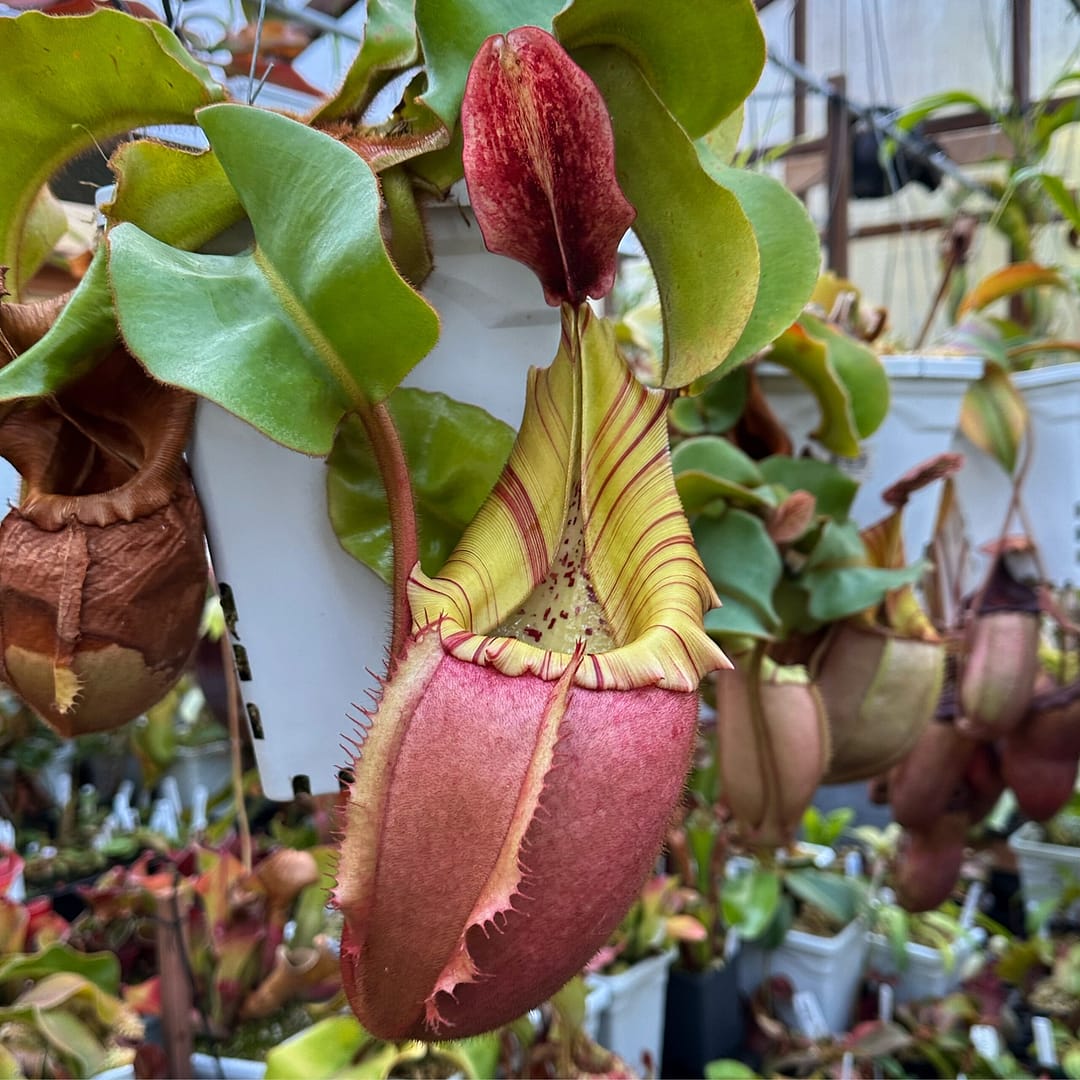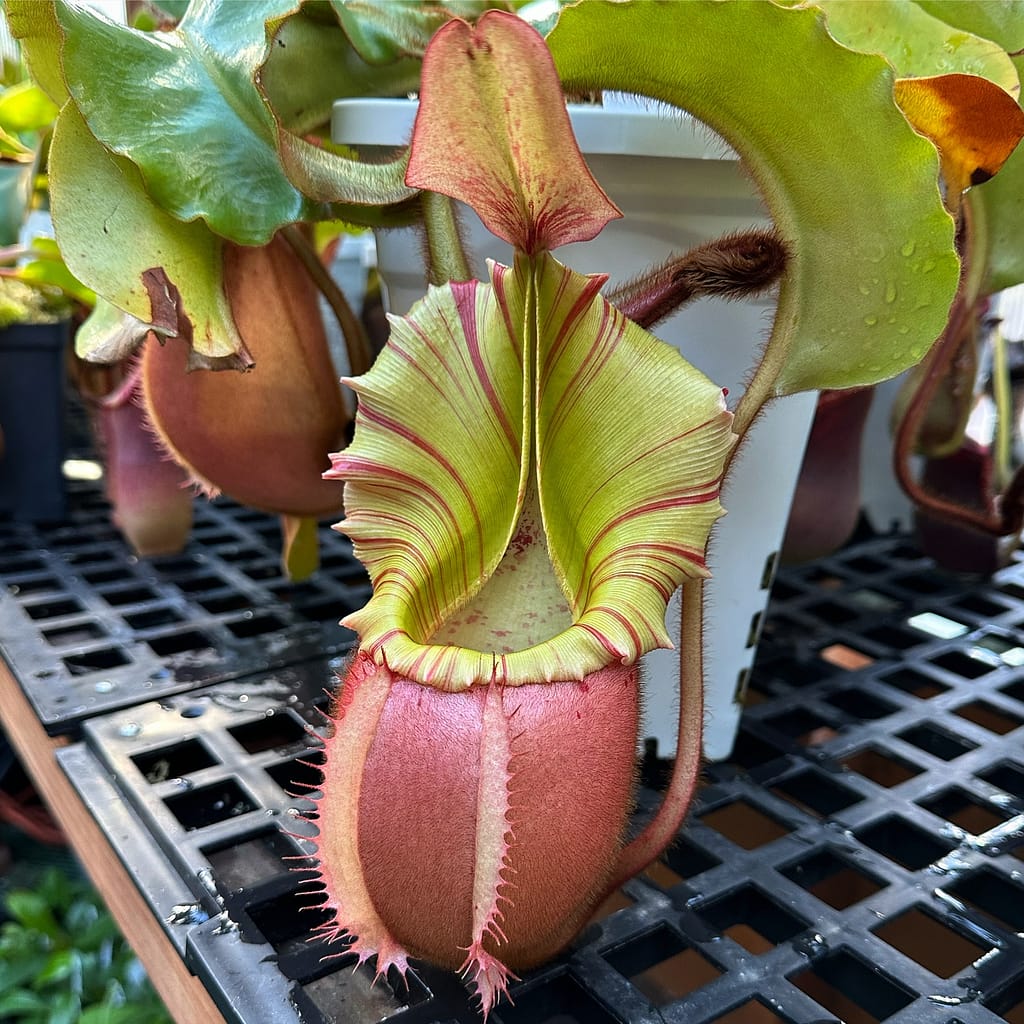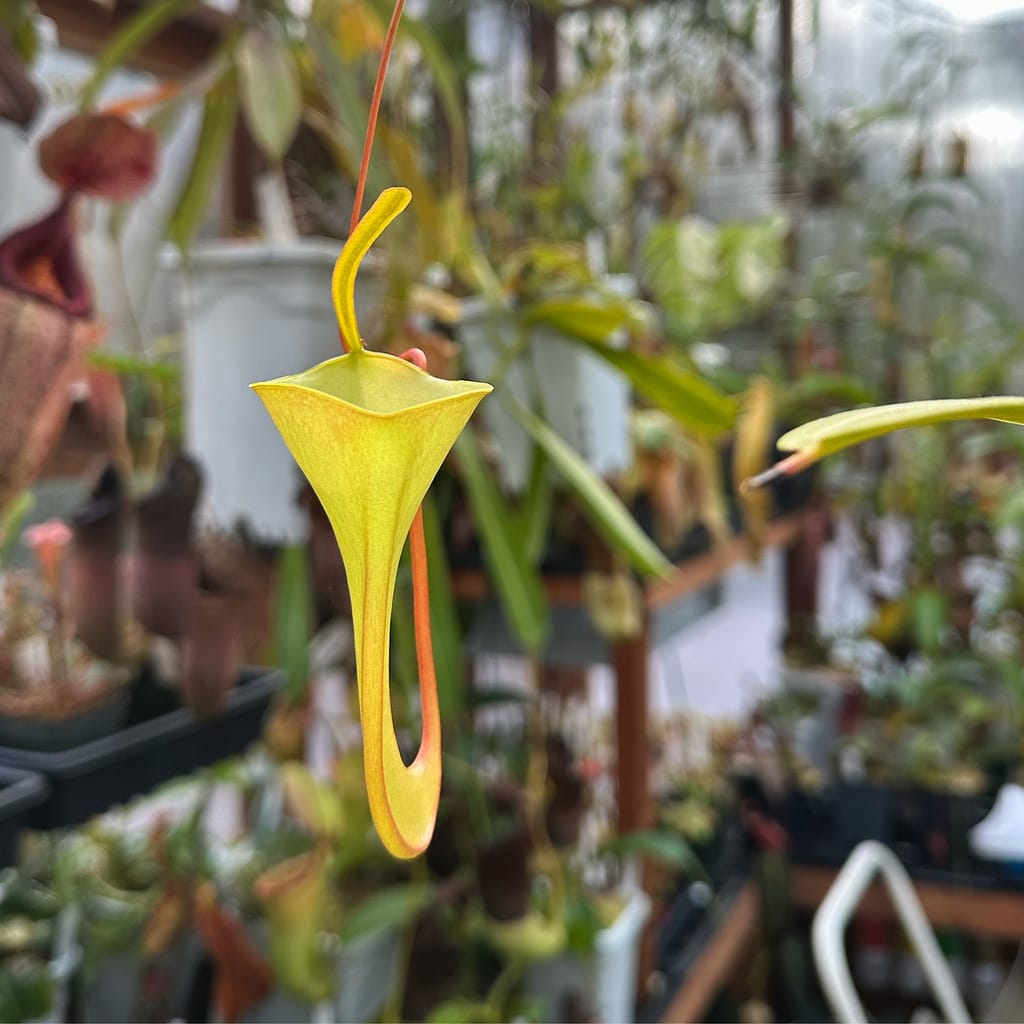
How to Take Nepenthes Cuttings
As Nepenthes grow, they will eventually start vining and growing basals. These can be cut and propagated to create more of your favourite plant! This guide will talk about how to cut and root Nepenthes vines and basals.


Nepenthes Vines
As Nepenthes grow, the space between leaves will eventually start to elongate. As the plant starts to vine, they will generally start producing intermediate followed by upper pitchers. Often times, the morphology of these upper pitchers are very different from the lower pitchers. In nature, lower pitchers aid the plant to catch terrestrial insects – the darker colours is more indicative of the leaf litter on the forest floor and the pitchers have wing-like structures that act like ladders for insects to climb up and fall inside the pitchers. As the plant vines, they grow up into the higher canopy. Upper pitchers are generally smaller and are paler in colour. The upper pitchers lose the ladder like morphology as they are more designed to catch flying insects. As a result of this type of growth strategy, Nepenthes vines can be quite long. In captivity, these vines can grow across the greenhouse or grow space.
Cutting Nepenthes Vines
Cutting Nepenthes vines can be a good way to keep your plant contained in your grow space while propagating genetically identical plants to share. Before you cut your vining Nepenthes, make sure there is another growth point on the plant (see below for information on basals). The general rule to cutting vines is to retain enough nodes in each cutting – a node is where the leaves are growing from the vine. I generally try to have at least two in each cutting but I have seen people successfully root with only one. The more nodes per cutting, the better the chances are to root it. Count out how many cuttings you plan to take off the vine and sterilize your scissors or cutters with alcohol or fire. Cut each cutting at an angle to provide more surface area for roots to develop.
Potting Nepenthes Vine Cuttings
I root my Nepenthes cuttings in the same media that I use for the mother plant (see my Nepenthes grow guide for more information on what I use for my growing media). I wrap each vine cutting with sphagnum so there is a good connection between the cut area and the media. There are no roots (yet) so you can pack this a little more tightly than an actual plant!


Nepenthes Basals
Another way Nepenthes grow is through producing basals, which is a new growth point that will emerge from the root system or stem of the mother plant. These basal growth points are identical clones of the mother plant and are a good way to propagate your favorite plant. Often times, basals will produce larger pitchers than the mother plant but will use energy from the mother plant to grow and cause the mother plant to grow slower. My general rule is to cut the basals until the mother plant starts to vine. I do this to direct the mother plant energy towards vining and eventually flowering. Whether you cut or leave these basals is largely dependent on what goals you have for your collection. One thing to note, growers have recorded vining nepenthes to suddenly decline and die back. Cutting and rooting a basal can be a good way to safeguard in case the mother plant declines.
Cutting Nepenthes Basals:
I normally wait till the basal has at least 3-5 leaves. The larger the basal is, the easier it will be to root. If you think the basal is too small to remove, let it grow out a little longer. I gently separate the basal from the mother plant before I start cutting. You want to make sure you are cutting right plant – I have accidentally cut the mother plant before so definitely look twice before you cut! Once you have separated the basal and mother plant, cut the basal at its base at an angle. This will provide more surface areas for roots to eventually grow from.
Potting Nepenthes Basals:
Now that you have your basal separated, it’s time to root it. This can be done through a variety of ways – I root my basals in the same media as the mother plant (see my Nepenthes grow guide on how I make the growing media). The main factor to rooting basals is to ensure that the cut surface has good contact with the sphagnum moss or media substrate. I use the sphagnum moss as a sort of a seatbelt method to keep the basal anchored into the growing media. I drape a few strands of long fiber sphagnum over each of the bottom leaves of the basal. I let these “seatbelts” hang down then wrap more media around them and the base of the basal. I have found this helps keep the basal firmly into the moss and prevents it from getting pushed up over the next few months.


Rooting Nepenthes Cuttings
Rooting Nepenthes cuttings (basals and vines) can take anywhere between a few weeks to a few months. It’s best to not move them around excessively in case they come loose in the media. Some people use rooting hormone – which can be applied to the cut surface of the cutting. I’m not sure how much more this helps the cuttings root but there isn’t a lot of downside in doing it outside of not having enough time.
I generally root my cuttings near the mother plant – if it was good enough for it then it’s good enough for it now! Overall, just make sure that the cuttings get enough light and the media doesn’t dry out. I just water them following my normal watering schedule to try and not complicate things (another good reason to use the same potting media for the basal and mother plant!).
And that’s my guide to taking Nepenthes cuttings! I hope you found this helpful and hope you try propagating your Nepenthes!